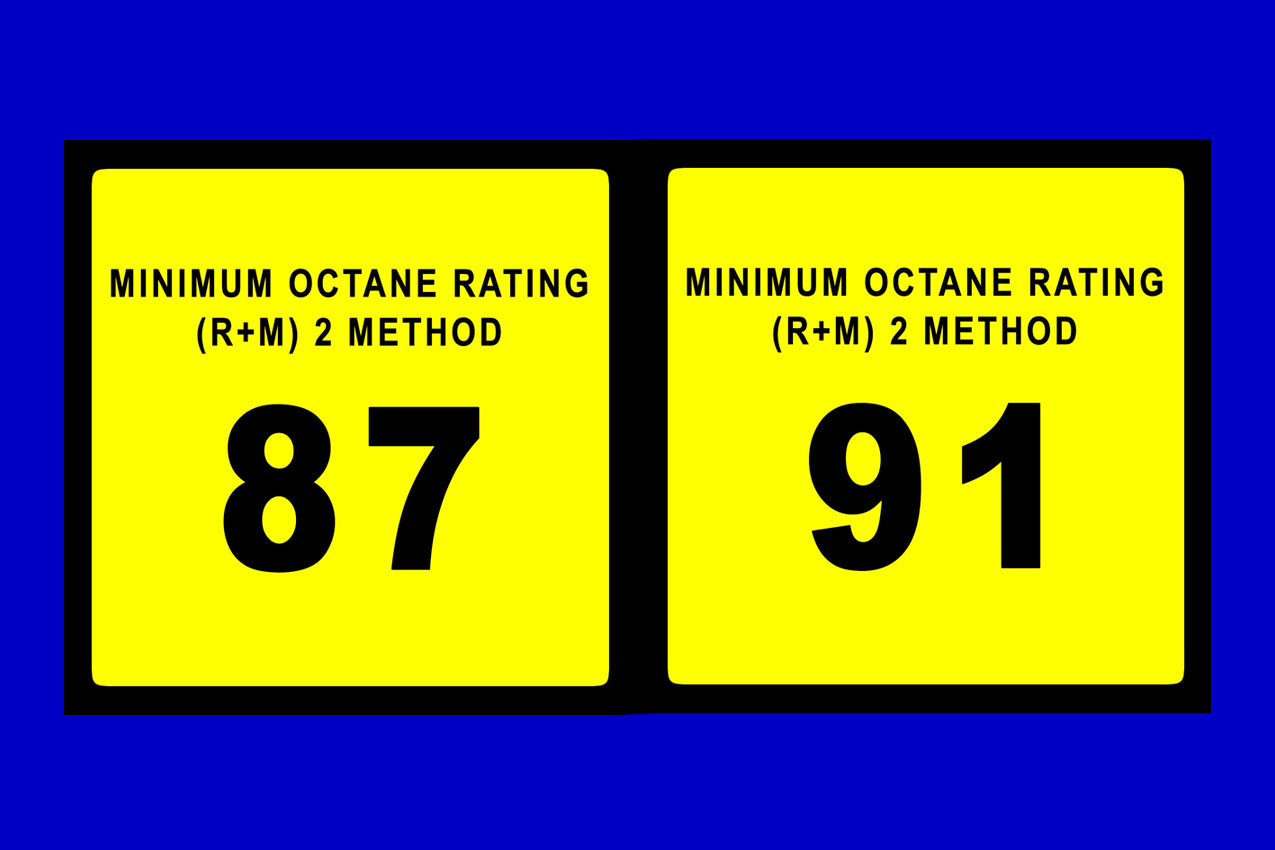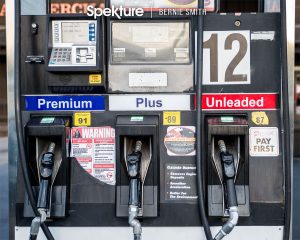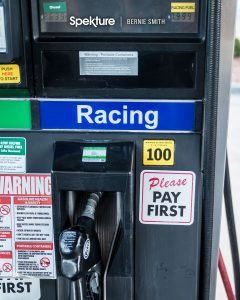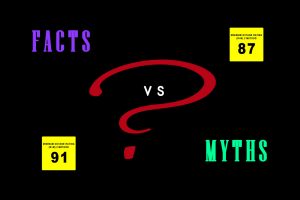
High Octane Hooey: Are You Wasting Money at the Gas Station?
Everyone knows when you run higher octane gas in your car it will run smoother, make more power, and get better fuel economy, right? Not only is that a common misconception: in some cases, using higher octane gas can actually make your car run worse and get worse fuel economy if you run higher octane gas than needed! In this month’s tech article I’m going to discuss this myth, other gasoline myths, and hopefully demystify gasoline in general for some readers.
First, we need to explain what octane is and why it’s important to know. Before we do that, we need to dispel another misconception some people have: when a gas – or for that matter, a diesel engine, is running properly and with no concerns, the air/fuel mixture that enters the engine is ignited, consumed, and turned into energy. I think everyone understands this. Where the confusion starts for some is what normal combustion for gas engines (and diesel engines alike) actually is. Normal combustion occurs when the air/fuel mixture is, in fact, burned at a controlled and predictable rate, at a specific time, within the engine’s rotational cycle.
It does not explode, and at no time is it ever desirable for an explosion, or detonation to take place in any gas or diesel-powered engine of any type. If an explosion or detonation of the air/fuel mixture does occur, extremely localized hot spots with uneven cylinder pressures are the result, with major engine damage possible if severe or prolonged enough. Not a good thing!
Detonation is commonly referred to as: “spark knock,” “pre-ignition,” or “pinging,” and is recognizable most often as a tin can rattling sound coming from the engine under moderate throttle, going up a grade, or wide open throttle under heavy acceleration. There are many causes of detonation. Running hot or overheating-related concerns, ignition timing over-advanced, EGR system problems, or insufficient octane for the engine’s needs are some common causes. Whatever the cause, the result is the same: the air/fuel mixture is not burning the way it should, and/or when it should.
Octane, simply put, is a measure of a gasoline’s ability to prevent detonation. The higher the octane, the less likely detonation is to occur, and the less volatile the fuel is. That seems to be a contradiction, doesn’t it? High performance racing engines running high octane racing gas making lots of power seem to just scream “highly volatile,” don’t they? This couldn’t be further from the truth. The reason being is that octane has absolutely nothing to do with the measurement of gasoline’s ability to produce a certain amount of energy when burned. There are a variety of different methods across the world on how gasoline’s octane is rated. For the purposes of this article I won’t discuss specific octane rating methods here, as they don’t really have any pertinence to our discussion.
That brings us to the myth about higher octane gas making your car run better. That statement needs to be qualified: in a car that is running properly, that does not have any special requirements/recommendations for octane from the manufacturer, there is absolutely no benefit to running any higher octane gas than needed. In other words, if your car runs fine on 87 octane, you are just throwing money away by using gas with a higher octane rating. That is contrary to what many gasoline retailers imply. They rely on misleading advertising, myths perpetuating themselves, and an underlying paranoia people have regarding their car’s well-being to get people to pay for higher octane gas than needed.
There is no doubt one or more persons reading this swear their car runs better and/or gets better fuel economy with higher octane gas. To that I say: it is a figment of your imagination perpetuated by a one-time issue that is no longer present and/or you have bought into your favorite gasoline retailer’s advertising, your car has an issue you aren’t aware of, your gas station of choice has ongoing gas purity issues, or your car does in fact have a requirement for higher octane gas. Any of those cases make you an exception. Because higher octane gas is less volatile, it is also harder to ignite as a result. If your car will run fine on 87 octane gas and you run 91, it can, and does in some cars, make them hard to start. Because the higher octane gas doesn’t ignite as easy, a car running it for no reason is more likely to have concerns with incomplete combustion (small amounts of leftover, unburned air/fuel mixture), and thus won’t run efficiently, and as a result fuel economy may go down. Every car is unique. You might not suffer hard starts or lower fuel economy, but it is possible. Want to test this out? Grab a gas-powered lawn mower, run it out of the gas that’s in it (or drain it), and go fill it with high-octane gas. You’ll be lucky to get it to start, in many cases. The hard start problem is much more pronounced in the lawn mower because of its small motor which doesn’t have as much compression as most car engines.
About now, someone is probably thinking, “Why do race cars and high performance street cars need high octane gas, then?” The reason is the engines in these vehicles are modified to have higher temperatures as a whole and/or higher cylinder pressures, which directly correlates to higher combustion chamber temperatures. This makes it much more likely that detonation will occur. Adding a turbo, supercharger, or increasing the compression ratio are all tried-and-true methods of increasing an engine’s horsepower. Rarely can modifications like these be done without any other changes to accommodate them and have it run properly. The first problem encountered is usually detonation. Sometimes all that is required is running higher octane gas after doing one of those modifications.
There is one glaring caveat I must state, or I’m sure someone will call me out. Many performance type cars do in fact have a recommended minimum octane gas that is recommended. If you own one of these cars and you choose to ignore that requirement/recommendation, the performance of your car will, in fact, suffer. So there, I said it! The reason the performance degrades in these cars is because their computer controlled fuel injection system incorporates the use of a “knock” sensor. This is a sensor that is designed to listen for, or detect, detonation. If detonation is detected, the computer will retard the ignition timing, reducing the likeliness of detonation occurring. As a result of the adjusted ignition timing, the engine won’t make as much power. Some cars continuously monitor and adjust for this; others adjust one time and only reset to normal timing after turning the ignition off and restarting the engine.
Gasoline retailers feed on people’s’ anxieties about their cars, so their advertising is designed to help feed this myth. Their ads include claims about additives and conditioners, or detergents in their gas, usually more so in regards to their premium gas (high octane) to promote better performance, and better fuel economy. Some of this is to prevent claims of false advertising from claims that high octane gas in itself will make your car run better. As far as the claims about their additives, while it is possible in theory that you can benefit from keeping your fuel system clean by using a gas cleaning agent, it is added at levels so low on that there is no real world benefit to these additives that gasoline companies rave about. If these additives/fuel system cleaners were added at a level high enough to do any real good, the emissions coming from the tailpipe of your car would be higher than normal, and that dreaded check engine light might also turn on in newer cars. Due to the nature of these additives being corrosive in most instances, long-term use may cause damage. Some examples of these detergents would be: acetone, toluene, xylene, benzene, naptha, stoddard solvent, methanol, isobutanol, and polyetheramine.
The most abundant gasoline additive being used in the United States currently is ethanol. There are many reasons ethanol is in favor currently as an additive – not all of them are good, in my opinion. Ethanol, or grain alcohol, is added to unleaded gas at 10 to 15% by volume. Ethanol was thought to be the perfect choice as an additive because it creates crops for farmers in the U.S., decreases our use of gasoline, burns cleaner, increases the octane of gas, and is more environmentally friendly than other additives used in the past like tetraethyllead (lead) and methyl tert-butyl ether (MTBE). Just as with anything, there are compromises with ethanol use.
Running ethanol in vehicles not specifically designed for ethanol (non flex-fuel capable, or not designed to run on 20% up to 85% ethanol) will cause faster than normal wear to occur. Ethanol is corrosive and it attacks certain types of metal, plastic, and rubber, degrading them. Vehicles running E10 or E15 (10-15% ethanol, 85-90% gasoline) wear out faster than pure gasoline. Valve train and fuel system components are the most affected items. The amount of damage that occurs varies and is based on the type of materials used to manufacture that vehicle, and how much ethanol is used over its lifetime. This is a fact, of which results of a scientific study was found, and can be read by following this link: https://crcao.org/reports/recentstudies2012/CM-136-09-1B%20Engine%20Durability/CRC%20CM-136-09-1B%20Final%20Report.pdf
Because ethanol has different energy content than gasoline, a different volume of it is required to maintain the same air/fuel ratio as an engine running gasoline. The more ethanol added to gas, the leaner the air/fuel ratio will become due to this fact. If the car running the E10, E15, or higher percentage ethanol content can’t compensate for this leaner air/fuel mixture, the combustion won’t be as complete. This isn’t as much a problem for newer cars, but older cars can’t compensate as easily. Non-computer controlled cars don’t compensate at all! Once the percentage of ethanol reaches 20% and goes higher, even modern cars made in the last couple years can’t compensate. As someone who has repaired many cars with drive-ability/check engine lamp concerns, I can tell you the gasoline companies haven’t perfected their method of maintaining the correct percentage of ethanol content in their gas, at least when it is at the gas station. Finding ethanol content higher than advertised levels labeled on the pump is not that uncommon, especially when purchased at bargain gas stations.
To summarize, what we’ve established is you’re just wasting money at the gas pump buying higher octane gas than your car’s manufacturer recommends. Run regular in the family car and premium in the performance car! It’s also best to avoid ethanol in cars not advertised as “flex-fuel”, especially those older than 10 years. Vehicles that are not used for periods of 3 months or longer and vehicles 20 years old & older should especially avoid ethanol if at all possible. It’s my opinion, the powers that be are hoping these older cars will wear out, they’re use will diminish, and they will be replaced by newer cars that are being made to compensate better for ethanol content. That or they’re hoping we’ll all be driving electric cars sooner than later – I hope not!


